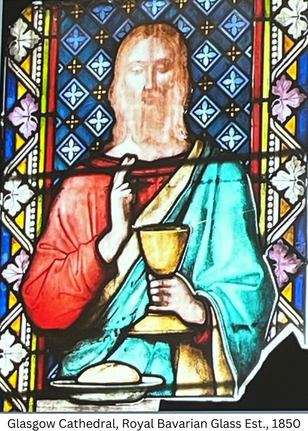A Touch of the Gothic
- Jane Bird, Museum Associate
- Jul 28, 2023
- 2 min read
Despite the solemn Renaissance Revival façade, it strikes many visitors as they enter Lippitt House Museum that this 1865 mansion is not exactly a model of austere restraint. Drawing on several historic design influences from around the world, Henry Lippitt, like his contemporaries, subscribed to the “more is more” school of interior design, favoring grand, ornate, and impressive over understated, minimal, or spare. Geographic design influences including French, Moorish, and Greek were all incorporated into the design for the Lippitts' new “modern” 19th century home.
During the middle of the nineteenth century, neo-Gothicism swept the design world. Defined by a look of finery and inspired by romantic reinterpretations of 12th to 16th century Medieval Courts, this movement was embraced by the families made newly wealthy by Victorian industry, manufacturing, and trade advancements. In Britain, architect, theorist, and designer A.W.N. Pugin was called upon to construct the most important public buildings in this style. In America, Gothic Revival elements were first seen in churches, academic buildings, and museums, until the look became the preferred style for expensive private homes.
Recognizing Henry Lippitt’s willingness to embrace this stylish décor, suddenly distinct neo-Gothic details appear everywhere in the house. The stained-glass by William Gibson evokes the shapes and colors found in the Lady Chapel at Glasgow Cathedral, created by the Royal Bavarian Glass Establishment in 1850. The colors also seem quite in sync with those at Keble College Library at Oxford University, a building entirely designed by William Butterfield, a notable architect of the High Victorian Gothic school.
(click to expand images)
Adjacent to this stained-glass example can be found patterned paint work by Cattanach and Cliff, the Scot and Englishman responsible for Lippitt House Museum’s intricate and expertly painted walls and ceilings. These shapes and colors echo nearly identical decorations found in Gothic Revival churches all over England, but most notable St Giles Church in Stoke-on-Trent in Cheadle, in the Midlands; designed by Pugin in 1841, the specific reds and greens, arched gold work and repeating patterns are especially vibrant and pronounced at this site.
(click to expand images)
These clear nods to Pugin’s and Butterfield’s designs, speak to the Lippitts' interest in modernity and desire to build a home that reflected their sophistication, worldliness, and taste. As wonderfully preserved as it is, the house serves as an excellent reflection of Victorian sensibilities, changing attitudes, feelings on class and fortune, and demonstrations of power and grandeur – a story of a rapidly changing world can be found in design clues here. Neo-Gothicism on the landing did not prohibit Moorish design in the Library, nor did the English stag head in the Dining Room bar the inlaid Greek key in the Hall flooring. The variety of elements included here means that treasures abound for the keen observer.
Lippitt House Museum Associate Jane Bird recently traveled to the UK for a study course organized by the Victorian Society of America on Victorian Art and Architecture. Jane’s group studied historic sites from London to Liverpool.














Comments